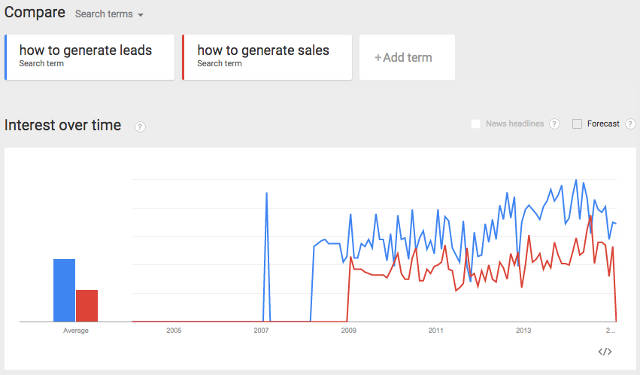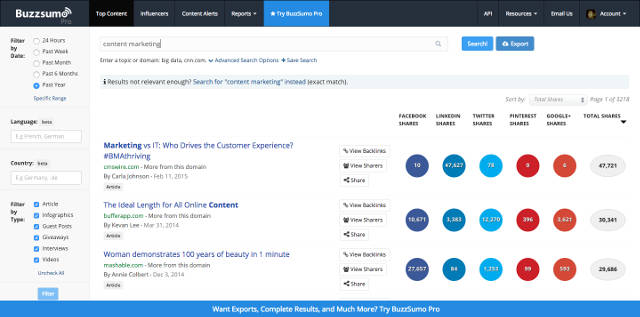 Every 60 seconds, there are 216,000 Instagram updates, 277,000 tweets, 2,460,000 content shares on Facebook, and hundreds of thousands of other content being shared across other social networks and messaging app.
Every 60 seconds, there are 216,000 Instagram updates, 277,000 tweets, 2,460,000 content shares on Facebook, and hundreds of thousands of other content being shared across other social networks and messaging app.
So how are you going to get your readers to read the article you took hours to research, write and edit?
Headlines. And it is becoming more important with each new social platform. Being inundated with hundreds, if not thousands, of updates every day, the average person often only skim through their social updates in search of contents that interest them at first sight.
Table of Contents
You Decide To Read This Article Because Of Its Headline
Now you see how important headlines are?
8/10 of readers will read your headline, while only 2/10 will read your article. Furthermore, once these people have reached your page, about 38% would bounce off the page even before they read your first paragraph.
So to ensure your article gets the attention it deserves, you have to write headlines that make people want to find out more.
And You Were Interested In The Headline Because It Appealed To Your Self-Interest
John Caples mentioned four main important qualities a headline may possess: self-interest, news, curiosity, quick and easy; and ranked self-interest as the most important one of all.
Why is self-interest so important? Because readers are paying to read the article with their time — a precious and limited commodity nowadays. This is especially true since now we need to make ourselves available to at least 2-3 different social media platforms.
In order to appeal to your audience’s self-interest, you have to first understand them, their needs, problems, and right down to the words they are most likely to use to address these issues.
Find Out What Appeals To Your Customer’s Self-Interest
Buyer Persona: Hubspot Guide To Create Personas
Please everyone and you would please no one.
Understand the demographics and behaviour of your most profitable group of customers and start working from there. By focusing yourself on one specific customer, you will be able to find out his or her deepest wants and needs and craft your offer from there.
Find out how your customers word their self-interest: Google’s Keyword Planner and Google Trend
If you did your customer’s persona’s research, you would most probably have a list of your customer’s pain point, worries, and goals that they wish to achieve.
But knowing your customers’ pain points aren’t enough; you need to understand how they “think”, specifically how they search.
Take a look at this example between “how to generate leads” and “how to generate sales”. Sales and leads are closely related terms, and both lead to the same goal — revenue.


As you can see, “how to generate leads” is searched far more often as compared to “how to generate sales”. So remember that even though your content might be one of the best on the web, it won’t be read if you get the headline wrong.
Social Sharing Strength: Buzzsumo
But sometimes people don’t really know what they want till they see it. So how do you find out what your readers want if they aren’t searching it on search engines?
This is where Buzzsumo can help; it helps to gauge your customer’s interest through the number of social shares a particular topic/keyword gets.

It allows you to categorize your result with date, type of content, country, and language. It also has an advanced search function that lets you refine your search through words exclusion, URL, author name etc. You can even categorize it based on the most shares for a specific network.
With these tools and information, you would then be able to craft a compelling offer from your headline. That’s not all though… you would still be able to improve on it with some tried and proven headline methods from John Caples.
Some of my favourites here:
- Start your headline with the word “New” — Given that a lot of the contents and products now are variations or outright duplicate of existing content (just take a look at the app store), the word “new” gives readers hope that they might find something different in your content.
- Offer information of value — As we mentioned before, readers are paying to read your article with their time, so if you promise them valuable information, they might just click on it.
- Be specific in your headline — Aim to be specific if you feature data or social proof in your headline. For example, write “How My Blog Post Brought 286 backlinks. And Counting!” rather than “How My Blog Post Brought Over 200 Backlinks. And Counting!”. You are more convincing when you are specific.
- Offer a shortcut — I am sure all of you are familiar with “list posts” (e.g. 10 ways…, 3 days to…, etc.). And the reason why these list posts works are because they offer a promise of achieving success in a short period of time.
Hopefully, these tips gave you some inspiration for your next headlines. Feel free to share other tips below in the comments!

